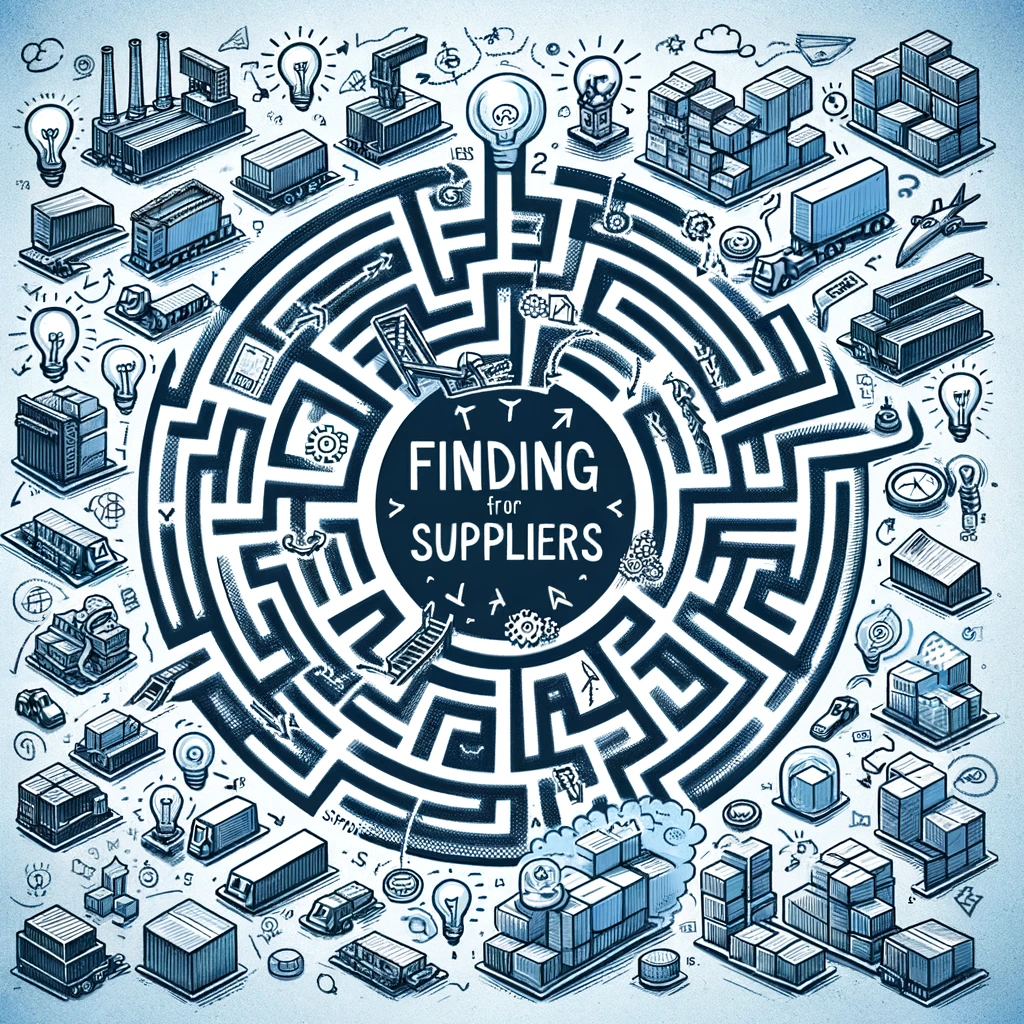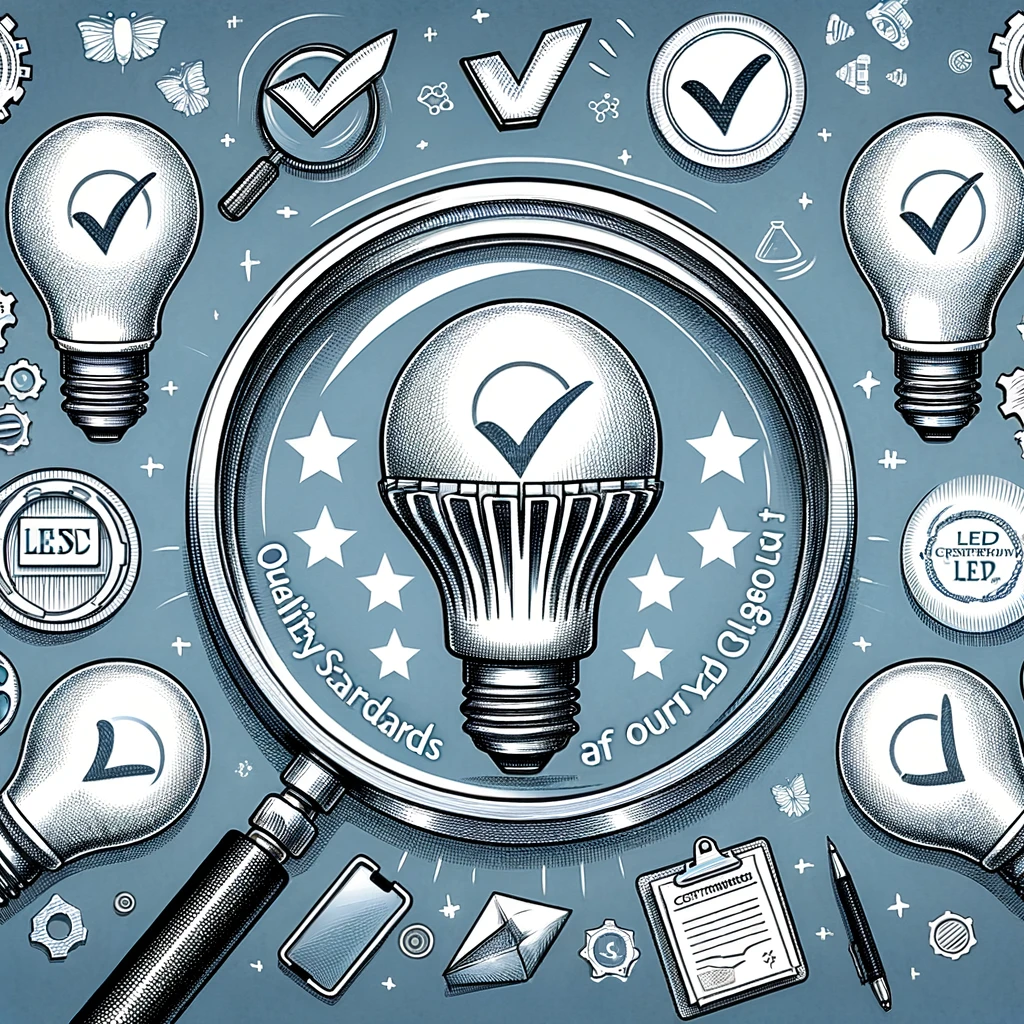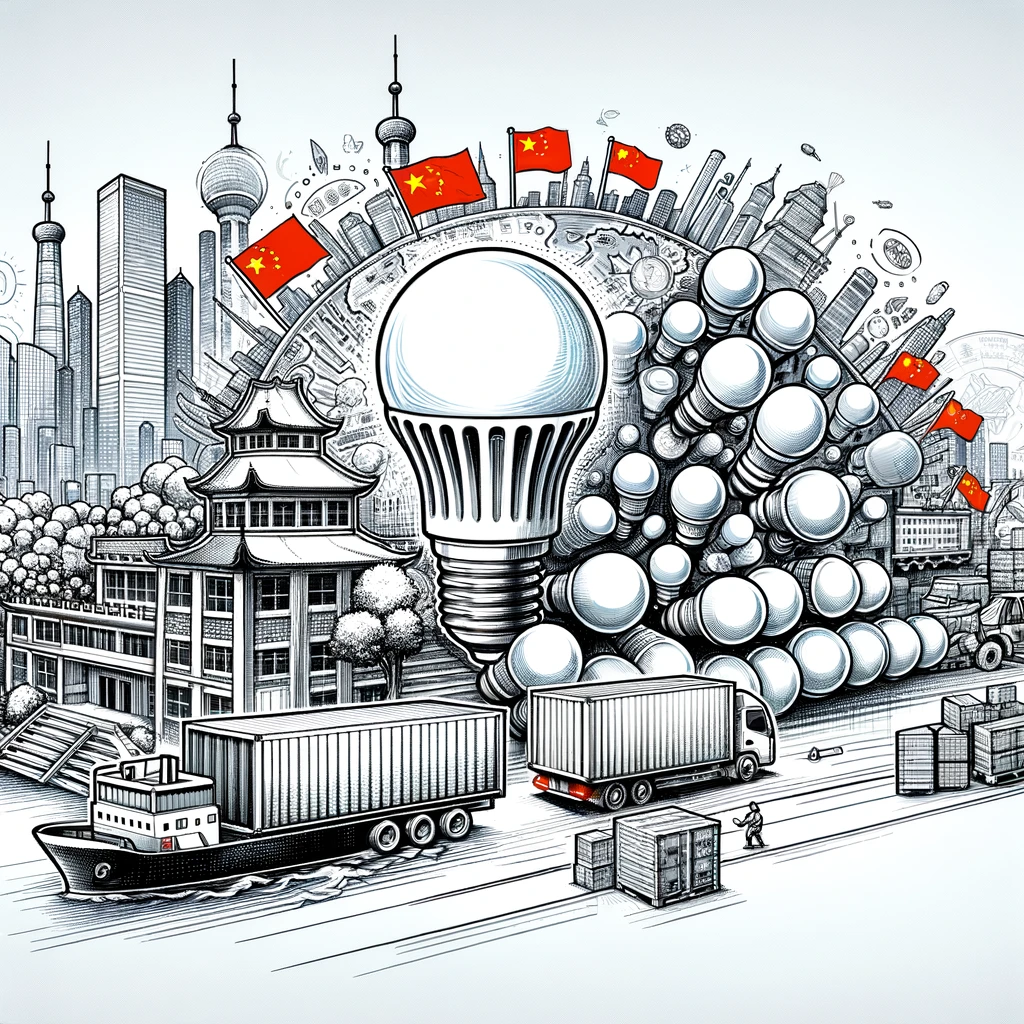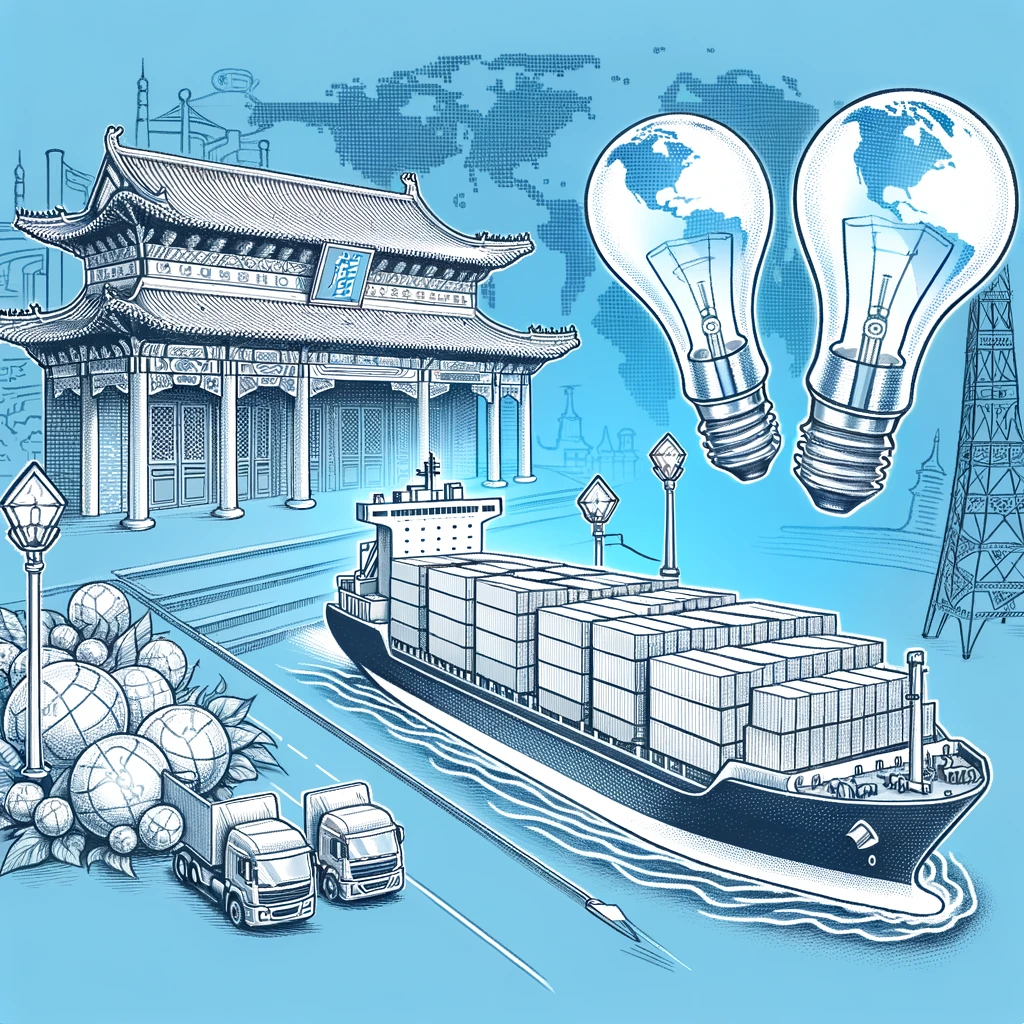Introduction
Why is Importing LED Lights from China a Game-Changer for Your Business?
The Rising Demand for LED Lights: A Global Perspective
In the rapidly evolving world of lighting, LED lights have become a dominant force, especially in the context of global sustainability and energy efficiency. This shift towards LED technology isn’t just a trend; it’s a response to a growing demand for more eco-friendly and cost-effective lighting solutions. So, why is importing these lights from China particularly advantageous for businesses around the world?
China has emerged as a leading player in LED manufacturing, thanks to its advanced technology and large-scale production capabilities. This makes Chinese LED lights not only highly innovative but also remarkably affordable. For businesses looking to stay competitive, tapping into this market is not just a choice but a necessity.
HAI International Holding: Your Gateway to Efficient LED Light Importation
HAI International Holding stands at the forefront of facilitating seamless importation of LED lights from China. As a seasoned freight forwarder, HAI International Holding offers expertise in logistics management, customs clearance, and efficient supply chain strategies. Their deep-rooted understanding of the complexities involved in international trade makes them an indispensable partner for businesses embarking on this journey.
Through strategic logistics solutions and comprehensive support, HAI International Holding ensures that businesses can capitalize on the benefits of importing LED lights from China without the usual hassle and uncertainty that comes with international trade. By choosing HAI International Holding, businesses are not just importing products; they’re embracing a world of economic opportunity and technological innovation.
Finding Chinese LED Lights Suppliers: Navigating the Maze to Find the Best

Strategies to Locate Reliable Suppliers
In the quest to find reliable LED light suppliers in China, it’s crucial to employ smart strategies. But where do you start? First, consider attending industry trade shows — these are goldmines for connecting with numerous suppliers under one roof. Another effective method is leveraging online B2B platforms, where you can filter suppliers based on reviews, certifications, and years of operation.
But it’s not just about finding suppliers; it’s about finding the right ones. Conduct thorough due diligence by checking their business licenses, export records, and customer testimonials. Remember, a reliable supplier is not just a vendor; they are a partner in your business’s growth.
Importance of Due Diligence
Due diligence is not just a step; it’s an ongoing process. Before finalizing a deal, visit the supplier’s factory to get a firsthand view of their operations and quality control procedures. This step is essential to ensure that the supplier’s capabilities align with your quality expectations and order requirements. Moreover, understanding their production capacity and lead times is critical to plan your inventory effectively.
Quality Standards: The Backbone of Your LED Light Import

Assessing and Ensuring Quality
When importing LED lights from China, maintaining high quality standards is non-negotiable. But how do you ensure the quality? Start by defining your quality criteria clearly. Are you looking for energy efficiency, durability, or specific certifications? Once you have your criteria, look for suppliers who have a proven track record of meeting these standards.
Utilize third-party inspections to verify product quality before shipment. This practice not only gives you peace of mind but also sends a clear message to the supplier about your commitment to quality.
Industry Benchmarks for LED Lights
Staying abreast of industry benchmarks is crucial. For instance, look for CE, RoHS, or UL certifications, which indicate compliance with international safety and quality standards. These certifications are not just badges of honor; they are a testament to a product’s ability to meet rigorous international standards.
Moreover, understanding the latest technological advancements in LED lighting, such as smart lighting capabilities or energy efficiency ratings, can give you an edge in the market. Aligning with these benchmarks ensures that your imported LED lights are not just meeting the basic requirements but are also staying ahead of the curve in a rapidly evolving industry.
Cost and Pricing: Mastering the Financial Aspects of LED Lights Import from China

Understanding Cost Structure
When diving into the world of importing LED lights from China, a clear understanding of the cost structure is paramount. But what factors contribute to this? There’s the production cost, of course, but also consider the logistics expenses, import duties, and potential hidden costs like storage fees. An insightful tip? Always have a buffer in your budget for unforeseen expenses.
To truly grasp the cost dynamics, it’s crucial to understand the components of Free On Board (FOB) pricing versus Cost, Insurance, and Freight (CIF). Each has its implications on the overall cost, affecting your bottom line.
Tips for Negotiating Prices
Negotiating prices with Chinese suppliers requires a blend of cultural understanding and strategic planning. Start by researching the standard market prices for the type of LED lights you’re interested in. Armed with this knowledge, you can negotiate from a position of strength.
Remember, it’s not just about getting the lowest price; it’s about getting the best value for your money. Consider negotiating for value-added services like faster production times or improved packaging, which can significantly enhance the overall deal without necessarily lowering the price.
LED Lights Customs and Import Regulations: Steering Through the Legal Maze

Navigating Customs Procedures
The journey of importing LED lights doesn’t end at purchase; navigating through customs is a critical phase. This involves understanding various documentation requirements like the Bill of Lading, Commercial Invoice, and Packing List. Keeping abreast of the latest customs policies can save you from unnecessary delays and expenses.
One pro tip is to partner with a freight forwarder like HAI International Holding, who can streamline the customs clearance process. Their expertise in handling paperwork and compliance issues can be a game-changer in ensuring a smooth import process.
Key Import Regulations to Consider
Each country has its own set of import regulations, and it’s vital to be well-versed with these when importing LED lights. This includes understanding the tariff codes specific to LED lights and any import duties or taxes applicable. Additionally, being aware of any anti-dumping laws or environmental regulations can prevent legal hurdles down the line.
For instance, in the European Union, LED products must comply with the WEEE Directive, which sets rules on recycling and disposal of electronic waste. Non-compliance can result in your shipment being held up or even penalized. Hence, keeping a finger on the pulse of these regulations is not just beneficial; it’s essential for a successful import.
Minimum Order Quantities in China: Striking the Right Balance

Implications of Order Size
When considering the import of LED lights from China, understanding the minimum order quantities (MOQ) is critical. But why does MOQ matter? MOQ directly affects your inventory management and cash flow. A higher MOQ might mean a lower price per unit, but it also requires a larger upfront investment and more storage space.
For small businesses or those new to importing, navigating MOQ can be challenging. It’s essential to negotiate with suppliers to find a MOQ that aligns with your budget constraints and storage capabilities. Some suppliers might be willing to offer lower MOQs at a slightly higher price per unit, striking a balance that works for both parties.
Balancing Quantity and Budget
Finding the sweet spot between order size and budget requires a strategic approach. Consider factors like the demand forecast for your LED lights and the lead time for restocking. If you’re testing a new market, you might opt for a lower MOQ to minimize risk.
Collaborating with a supplier for flexible MOQs based on future purchase commitments can also be an effective strategy. This approach not only helps in managing your budget effectively but also in building a strong relationship with the supplier.
Shipping and Logistics: Navigating the Complexities of Global Trade

Best Practices in Logistics
Effective logistics management is key to the successful importation of LED lights. It involves more than just shipping; it’s about strategic planning and execution. This includes choosing the right mode of transport, understanding the transit times, and ensuring proper packaging to prevent damage.
One best practice is to work closely with your freight forwarder to plan the logistics. This collaboration can help in optimizing shipping routes, transit times, and costs. Additionally, staying informed about the latest regulations and shipping trends can help anticipate and mitigate potential disruptions.
HAI International Holding’s Logistics Solutions
HAI International Holding offers specialized logistics solutions tailored to the needs of LED light importers. Their services include door-to-door delivery, customs brokerage, and warehousing options. What sets them apart is their deep understanding of the challenges specific to LED light imports, such as handling fragile items and managing bulky shipments.
By leveraging HAI International Holding’s expertise, businesses can ensure their shipments are handled efficiently and arrive on time. Their ability to navigate complex logistics landscapes not only simplifies the process for importers but also provides a competitive edge in the fast-paced world of international trade.
Lead Times: Navigating the Timelines in Importing LED Lights from China

Managing and Planning for Lead Times
When importing LED lights from China, understanding and managing lead times is crucial. But what exactly are lead times, and why are they so important? Lead times refer to the period from placing your order to the moment it’s delivered. This timeframe includes manufacturing, quality checks, and shipping.
Effective planning for lead times is essential to ensure you have enough stock to meet customer demand without overstocking. Factors such as Chinese holidays, which can significantly extend lead times, need to be accounted for in your planning. Also, consider the impact of global events, like trade disputes or pandemics, that might disrupt supply chains.
How HAI International Holding Can Assist
HAI International Holding can be an invaluable partner in managing lead times. With their expertise in logistics and supply chain management, they can provide accurate estimates and updates on shipping times. They also assist in expediting processes where possible, helping to minimize delays.
Utilizing HAI International Holding’s services means you can have more accurate timelines for your orders, allowing for better inventory management and customer satisfaction.
Supplier Reliability: Building a Foundation of Trust

Evaluating Supplier Credibility
In the world of international trade, the reliability of your supplier is as crucial as the quality of the product itself. How do you ensure a supplier in China is credible and trustworthy? Start by verifying their business licenses, reviewing their export history, and checking customer testimonials.
A reliable supplier should have a solid track record and be able to provide documentation and references upon request. It’s also beneficial to conduct a factory audit either in person or through a third-party to assess their operations directly.
Building Long-Term Relationships
Building long-term relationships with suppliers goes beyond just transactions; it’s about creating partnerships. Consistent communication, mutual respect, and understanding each other’s business needs are key.
When suppliers view you as a valued partner, they are more likely to offer favorable terms, priority production slots, or assistance during unexpected supply chain disruptions. These relationships can become a significant asset to your business.
LED Lights Certifications and Compliance: Ensuring Product Integrity

Required Certifications for Your Market
To import LED lights successfully, understanding the certification requirements for your specific market is crucial. For example, the CE mark in Europe or the UL listing in the United States are often mandatory. These certifications assure that the products meet safety and quality standards.
Stay updated on the required certifications, as they can vary depending on the type of LED light and the intended use. Non-compliance can lead to products being denied entry at customs, resulting in costly delays.
Ensuring Compliance with International Standards
Compliance with international standards is not just about meeting legal requirements; it’s about ensuring customer safety and maintaining your brand’s reputation. Work with suppliers who are familiar with these standards and can demonstrate their compliance through regular testing and quality assurance processes.
Regular audits and updates on any changes in compliance standards are also vital. This proactive approach not only protects your business but also assures your customers that they are receiving a product that is not only high in quality but also safe and reliable.
Payment Terms and Methods: Securing Your Transactions
Common Payment Practices
When dealing with suppliers in China, understanding and negotiating the payment terms is crucial. But what are the standard practices in this market? Typically, suppliers ask for a deposit (usually around 30%) before beginning production, with the balance paid upon shipment or after delivery.
However, payment terms can vary based on your relationship with the supplier and the order size. It’s essential to be aware of practices like Letter of Credit (L/C) or Telegraphic Transfer (T/T), which are commonly used for international transactions. These methods offer different levels of protection and should be chosen based on the risk assessment of the transaction.
Secure Transaction Methods
Ensuring secure transactions is vital in international trade. Utilize escrow services for added security, where funds are held by a third party and released only upon fulfillment of agreed terms.
Another key aspect is to conduct due diligence on the supplier’s bank details to avoid fraud. Always confirm the account details directly with the supplier through a secure communication channel before transferring any funds.
After-Sales Support and Warranty: Ensuring Continued Satisfaction
Expectations for After-Sales Service
After-sales service is a crucial component of customer satisfaction. But what should you expect when importing LED lights from China? Ideally, suppliers should offer technical support, assistance with any defects or issues, and advice on product use and maintenance.
Clear communication regarding after-sales policies is essential. Ensure that you understand the process for claiming warranties or returns, and have agreements in place for how issues will be resolved.
Warranty Terms and Conditions
Understanding the warranty terms is essential. Warranties for LED lights typically range from 1 to 3 years, but this can vary. Clarify what the warranty covers, such as defects in manufacturing or materials, and the process for making a claim.
It’s also important to have a clear understanding of what actions or conditions might void the warranty, such as improper use or installation.
HAI International Holding Advantage: Streamlining Your Import Process
How HAI International Holding Simplifies This Process
HAI International Holding offers a comprehensive solution to the complexities of importing from China. But how exactly do they simplify this process? Their services include end-to-end logistics management, customs clearance assistance, and real-time tracking of shipments.
By handling the intricate details of shipping and customs, HAI International Holding allows you to focus on your core business activities. Their expertise in navigating the regulatory landscapes and logistics challenges of different countries is invaluable.
Case Studies or Testimonials
To understand the real impact of HAI International Holding’s services, look no further than their success stories and client testimonials. These cases highlight their ability to reduce shipping times, solve complex logistical challenges, and provide exceptional customer service.
These testimonials not only demonstrate HAI International Holding’s capability but also provide insights into how businesses can leverage their services for successful importing experiences.
Conclusion: Illuminating the Path to Successful Importing
Recap of Key Points
In summary, importing LED lights from China can be a highly rewarding venture, but it requires careful navigation of various factors. From finding reliable suppliers and understanding quality standards, to managing costs and customs regulations, each aspect plays a pivotal role in your success. Remember, balancing order quantities with your budget, ensuring secure payment methods, and considering after-sales support are key.
Final Thoughts and Call to Action
Embarking on this journey can seem daunting, but with the right strategies and a partner like HAI International Holding, it’s a path filled with opportunities. Whether you’re a seasoned importer or new to the game, the Chinese LED light market offers vast potential. Now is the time to take that step – start planning your import strategy and explore how HAI International Holding can simplify the process for you.
FAQs: Your Questions Answered
How do I ensure the quality of LED lights from China?
Ensuring the quality of LED lights from China involves a multifaceted approach. Start by conducting thorough research on potential suppliers, including their business licenses, export history, and customer testimonials. Visiting the factory or arranging for a third-party inspection can provide an in-depth view of their operations and quality control processes. Additionally, requesting certifications that comply with international standards, such as CE, RoHS, or UL, is crucial. It's also recommended to test a sample batch of the LED lights before committing to a larger order, as this allows you to assess the quality firsthand.
What are the typical payment terms with Chinese suppliers?
Typical payment terms with Chinese suppliers usually involve a balance between security and flexibility. Common practices include paying a deposit (usually around 30%) before production begins, with the remaining balance due upon shipment or delivery. More secure methods like a Letter of Credit (L/C) are beneficial, as payment is made through banks once certain conditions are met. Telegraphic Transfer (T/T) is another option, involving a direct bank transfer, though this often requires a certain level of trust between the supplier and the buyer.
How can HAI International Holding help in the import process?
HAI International Holding offers comprehensive assistance throughout the import process. Their services include managing all logistics aspects from pickup to delivery, which can significantly ease the burden of coordinating international shipments. They also provide invaluable help with customs clearance, helping to navigate the often complex and ever-changing customs regulations. Additionally, HAI International Holding offers real-time tracking of shipments, providing importers with up-to-date information on the status of their goods, thereby enhancing the transparency and reliability of the shipping process.
What should I know about customs and import regulations?
When importing LED lights, it's important to be well-versed with customs and import regulations to avoid any legal or logistical complications. This includes identifying the correct Harmonized System (HS) codes for LED lights, which are essential for determining the applicable tariffs and duties. Importers should also be aware of the specific import regulations and standards of their destination country, such as safety standards, environmental compliance, and potential anti-dumping laws. Staying informed about these regulations and ensuring compliance is crucial to smooth customs clearance and avoiding delays or penalties.












